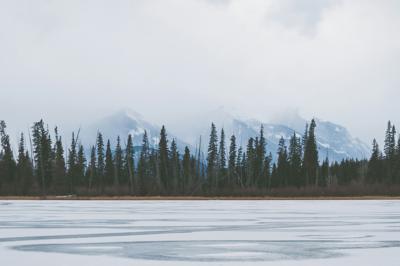LOGAN - Why is the amount of time Yellowstone Lake is covered by ice each winter holding steady while lakes around the world are experiencing shorter periods of ice cover?
New research from Utah State University’s Quinney College of Natural Resources has found unexpected outcomes in a warming world.
The Quinney College team, led by Watershed Sciences professor Scott Hotaling, found that even though the region around the lake has seen a warming climate for decades, increased snowfall at the lake has likely served as a buffer against warmer weather.
At 7,733 feet above sea level, Yellowstone Lake is North America’s largest high-elevation lake and it freezes over completely in late December and usually thaws in late May or early June.
Hotaling said air temperatures play a key role in driving ice formation and break-up; but the team did not find evidence for corresponding shifts in ice cover timing at Yellowstone Lake.



(0) comments
Welcome to the discussion.
Log In
Keep it Clean. Please avoid obscene, vulgar, lewd, racist or sexually-oriented language.
PLEASE TURN OFF YOUR CAPS LOCK.
Don't Threaten. Threats of harming another person will not be tolerated.
Be Truthful. Don't knowingly lie about anyone or anything.
Be Nice. No racism, sexism or any sort of -ism that is degrading to another person.
Be Proactive. Use the 'Report' link on each comment to let us know of abusive posts.
Share with Us. We'd love to hear eyewitness accounts, the history behind an article.